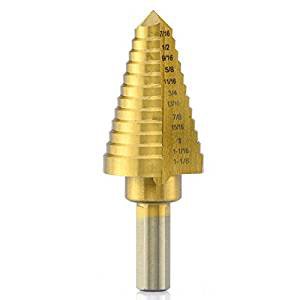- Joined
- Jun 7, 2013
- Messages
- 10,452
When you feel the drill starting to advance more easily, ease up on the feed pressure; it works!
Do you want to know how to drill a through hole without drama when it passes through the far side using your existing equipment and methods?I have been pondering how to finish a through hole just before it breaks through. With a hand drill this is where it bites, and tries to wrap you around the object being drilled. On a press, or mill this is where the bit will spin in the chuck, now that I have nice Albrecht chucks what is the actual proper procedure/technique? I usually have mild steel to work with.
That method works. I've used it successfully with green or yellow masking tape.What if you marked the drill bit with a sharpie, paint marker, lumber crayon etc just short of the depth to break through. That would give you some visual warning to use a little more care just before the drill breaks through.
I have a selection of colored sharpies that I will use to mark important spots on a piece of work when I'm working on the lathe.
USA made Jacobs ball bearing Super chucks are the best keyed chucks I have seen anywhere. They are no longer made in the USA, and quality, while still good, has definitely diminished. Some intermediate ones say "USA" on the chuck, but are not actually made in the USA (it is part of the company address -- no deception intended???) You need to see the word "Hartford" on the chuck for it to actually be made in the USA. The others are not as good.Which keyed chucks are good?

This is true, however when you run out of material on the far side before the drill passes through how do you maintain the chip?Interesting point Mr. Waller, I was told/taught that during the operation one should look for a continuous coil of swarf to be an indicator of proper feed. I'm not sure if this is true, or if it is correct for all materials. Do you slow the feed as you get close to the through depth? My Z axis is powered for position, but not rate adjustable. Drilling is manual feed. Thank you all for the responses so far.
I will have to look into backing material more often.

Wow! You get to sit down on the job? Amazing...This is true, however when you run out of material on the far side before the drill passes through how do you maintain the chip?
In other words you begin by drilling air and finish by drilling air. You can not maintain a consistent chip the entire time (-:
Remember that when a twist drill reaches the far side of the hole and pierces it will turn into a cork screw and advance itself if the feed is not under control, if you drill into a backing material the feed is under control.
I made this video a few months back, how to drill a hole with a lathe, I dislike the constant chatter that most ytube guru's employ so this is the basic idea.
Place stock in chuck, place drill in tail stock or turret, turn spindle on and power feed the drill until thru the part. You will notice that it is fairly silent until the drill begins to pass through the farside. 1 5/16" drill 3 1/2" thru in about 5 minutes each part with excellent chip formation for the most part.
Control the feed and most of your drilling problems will be solved.

